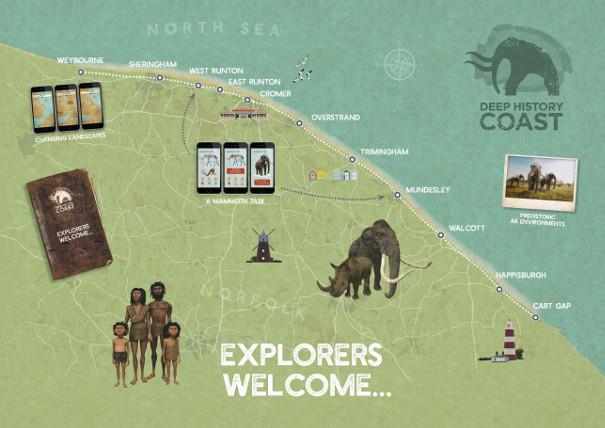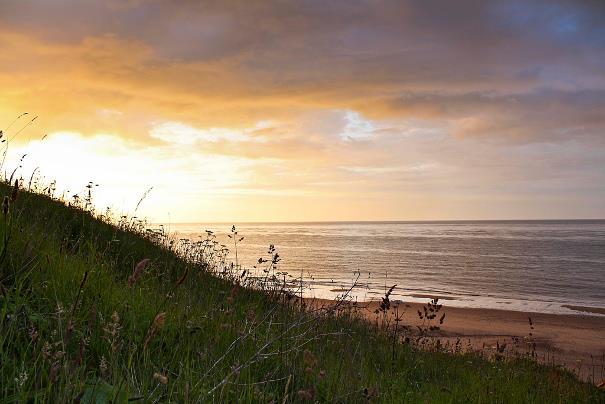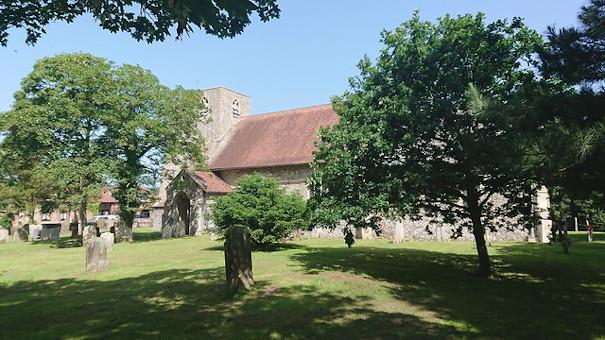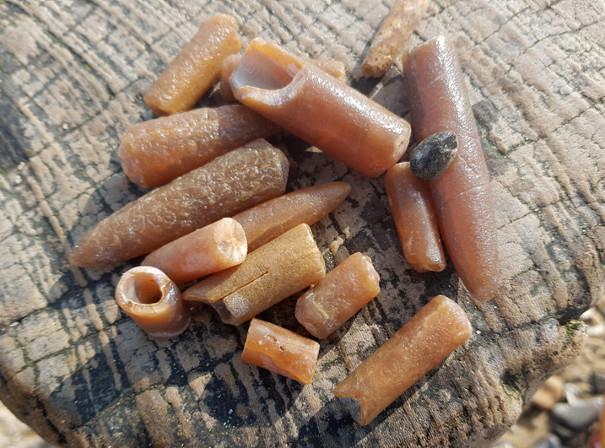North Norfolk's Deep History Coast is a 22-mile stretch of coastline between Weybourne and Cart Gap and is steeped in millions of years’ worth of history. With wonderful beaches, ideal for fossil and artefact hunting and a fascinating Discovery Trail, with fact revealing Discovery Points along the way, there is a lot to discover. There is a free downloadable Deep History Coast App to bring the trail to life linking with the Discovery Points along the way with information and interactive activities.
Through the app, you’ll be able to see the past come back to life and find out what life in Doggerland was like through the eyes of a hominin family, watch animals from 800,000 years ago roam the land and find out the names of any fossils you may find. Discovery Points are located at each of the main villages and towns. Here we focus on Trimingham.

ABOUT TRIMINGHAM
Trimingham, with its uniquely elevated position, offers amazing views of the coastline. As well as its beach, Trimingham is possibly best known for its radar station, RAF Trimingham which is a ‘golf ball’ structure on the main coast road. Trimingham beach is often quiet; it is located at the end of a steep narrow lane. The best way to access Trimingham beach is via Mundesley which is the nearest village for facilities. Head north west along the beach and the further you walk, the quieter it gets! After about an hour of walking, you will reach the secluded sands of Trimingham; popular with watersports enthusiasts and dog walkers. Please steer clear of the cliffs, do not dig into them and ensure you visit during low tide.

EARLY HISTORY
Trimingham was once a place of pilgrimage. Devout Christians came from all over the country in medieval times to see the head of St John the Baptist, which was kept in the little church for which it was named. Thankfully this was not as gruesome as it sounds - the head was of alabaster.
In the late medieval period, there was a great devotion to St John the Baptist here and people went to pray by the real head of the Baptist, just across the channel at Amiens Cathedral (you can still see it at Amiens today). Rather than make that journey, people prayed at the shrine altar at Trimingham, at the life-sized alabaster carving. Sadly it was destroyed during the Reformation 500 years ago when church dedications fell into disuse.
Trimingham Church is unique in that its dedication is only shared with two other churches in all England; Doddington in Kent and at Coln St Aldwyns in Gloucestershire. The idea of a dedication was different in medieval times. Churches were dedicated on, and to, feast days. St John the Baptist has two feast days; June 24th to his Nativity, and 29th August is the feast of the Beheading of St John the Baptist.

DEEP HISTORY
Today, Trimingham village is on the Deep History Coast Trail with a Discovery Point next to the Pilgrim Shelter which is opposite Trimingham Church, providing visitors with lots of interactive information about how the area looked millions of years ago.
The high cliffs at Trimingham are composed of some of the youngest chalk in the United Kingdom and are well known as a place for fossil hunting and collecting shells. But they suffer from quite extreme coastal erosion (there have been signficant landslips), so it is advised not to set up too close to the cliffside and definitely do not climb the cliffs from the beach.
Within the chalk, are the fossils of some of the animals that lived in the warm seas under which the chalk was laid down – oysters and sponges, brachiopods and belemnites, and as such it is a magnet for geologists and fossil hunters. In fact, parts of the cliffs are protected by law because of their geology and wildlife. There's a good chance of finding a belemnite fossil here. If you find one, you’ll be holding part of something that lived at least 70 million years ago.
'Belemnite' is actually the word for a whole group of species of squid-like animals that were so successful that they lived in oceans around the world in one form or another for 135 million years.
The Deep History Coast app will help you identify any fossils you find on the beach. You can also trigger the app at the Discovery Point to see how the coastline looked. The Deep History Coast Trail from Overstrand to Trimingham has some of the best views of the multicoloured cliffs (don't get too close to the edge) as they disappear into the distance in a scalloped line.

Things to do in Trimingham
The village of Trimingham is popular for being ideally located between two popular destinations - four miles south east of Cromer with its famous pier and Blue Flag beach, and two miles north west of the village of Mundesley, home to another Blue Flag beach. Ideal for walks, you can join the Norfolk Coast Path to Mundesley from Trimingham while looking out for fossils and pot stones along the way.
Related
Comments
Comments are disabled for this post.






